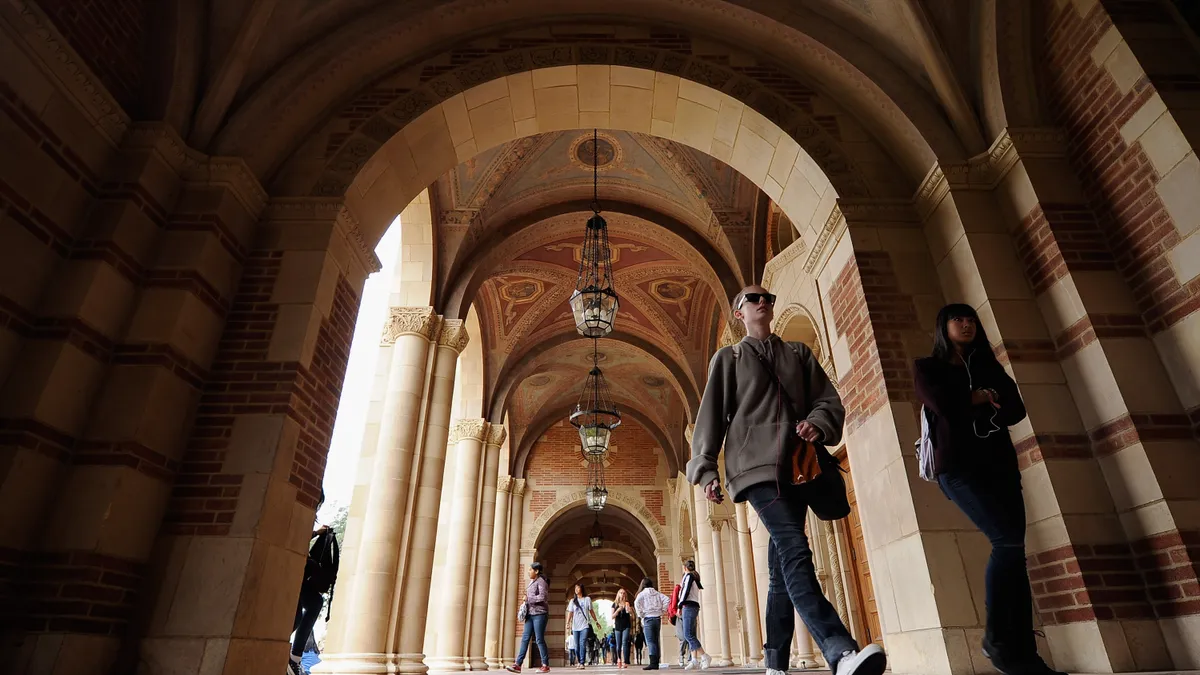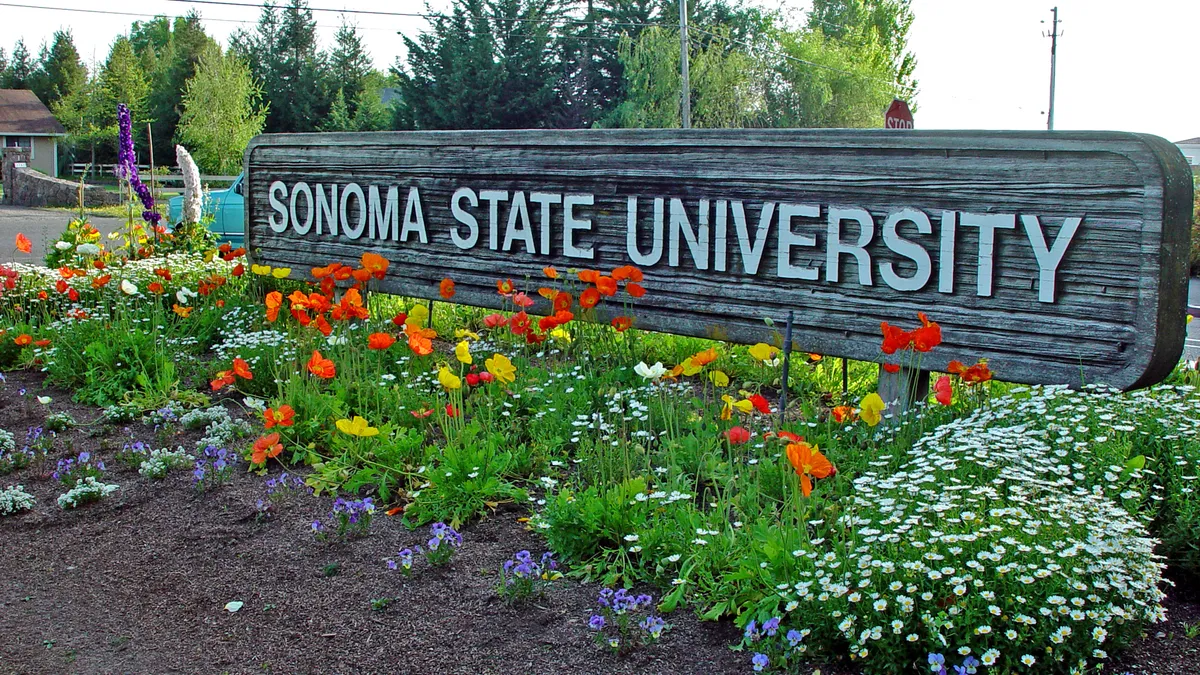Many in contemporary education circles recognize a need to focus increasingly on social emotional learning. Instruction in math and science, literature and even history will often fall on deaf ears if students are struggling with difficult realities outside of school.
Over a series of articles over the summer, Education Dive took a look at just how much issues like hunger, homelessness, drug abuse, poverty and high incarceration rates impact not just student learning, but school operations. From pre-school all the way through college, one theme ran consistent: Institutions are increasingly impacted by these various external factors.
-
Hunger
Nationally, the problem of food insecurity touches every single county and more than 48 million people. Only a little more than half of these people qualify for SNAP benefits, which have income, asset, and work requirements. The annual income cutoff for SNAP benefits is 130% of the poverty line, or $15,444 for individuals and $31,590 for families of four. Able-bodied adults without any dependents must work 20 hours per week to qualify for SNAP, which limits access for many students.
K-12 schools have long recognized how important it is to meet students’ basic needs before expecting them to perform academically. In addition to breakfast and lunch programs, weekend backpack programs, on-site food pantries, and summer meals programs, many schools connect families to community services for mental health, immigration help, tax preparation, substance abuse, and more.
However, while students in the nation’s K-12 schools lose access to reliable food sources during the summer months, high school graduates lose access to school cafeterias year-round when they trade in their high school textbooks for college ones.
Tara Garcia Mathewson thoroughly examined the impact of food insecurity on schools at all levels, highlighting ways in which both K-12 schools and higher ed institutions are working to address this pervasive issue.
Read the full story: Food insecurity hits schools nationwide, stretches into higher ed
-
Homelessness
Unlike hunger, which is relatively easy to identify and implement first steps towards a solution, homelessness is a more silent epidemic, and one that is more difficult to pin down.
The latest version of the Elementary and Secondary Education Act made a handful of updates to the McKinney-Vento Act that took effect Oct. 1. High school counselors will have to prepare and advise homeless youth about college and McKinney-Vento liaisons will be obligated to inform homeless students about their status as independents when it comes to federal financial aid for college. Schools will also have to report on the outcomes for homeless students as a subgroup and track their progress.
With the Higher Education Act due for reauthorization, advocates hope the needs of homeless students will make it into new regulations for colleges and universities, too.
In spite of these legislative hopes, identifying and serving homeless students continues to be a challenge for learning institutions across the country.
Read the full story: Schools struggle to find and support homeless youth
-
Poverty
Homelessness and food insecurity are both symptoms of a bigger problem: poverty.
Social justice outside of education typically incorporates public views on inequalities in housing, income, and criminal justice administration. But for the children growing up in environments where these challenges impact their daily lives, the learning outcomes typically create another vicious cycle of divesting — through suspensions, expulsions and negative classroom experiences.
"A large number of students coming to school from poverty live in a chronic state of stress, with symptoms mimicking those of ADHD," said Eric Jensen, an author and researcher who has consulted with secondary systems nationwide on strategies to educate students from impoverished communities. "So they get labeled as discipline problems, when really, they are living under chronic stress."
And while the mounting research on poverty impact frames the discussion as virtually irreversible, some colleges and universities across the U.S. are mission-mandated to reverse the impact of poverty on long term economic fortunes of states.
Still, these institutions, like the populations they serve, are facing sever resource gaps and the impact of poverty on students and institutions remains unchallenged.
Read the full story: Measuring the impact of poverty in education
-
The opioid epidemic
In many communities, rampant poverty and other social ills often bring an increase in substance abuse. In the case of opioid abuse, however, it has been the increased availability of prescription painkillers that has given way to a rising epidemic.
According to a recent report by researchers at Penn State University, heroin and prescription painkiller abuse is on the rise. Across the U.S., 28,647 deaths, or 61% of all drug overdose deaths, were linked to opioid use in 2014. Since 2000, the Center for Disease Control reports the opioid overdose rate has tripled, while deaths from heroin overdose have quadrupled over the past decade.
The epidemic's effects have sent shock waves through American society, and schools and universities have been no exception. The increased demand on already taxed districts and colleges to provide increased counseling services, as well as gird up against the possibility of such incidents is yet another challenge in the education landscape. The National Institute on Drug Abuse says one in 12 high school seniors reported having tried Vicodin for recreational use. One in 20 reported abusing OxyContin. And for college aged students, one in 10 reported having a prescription for OxyContin or Vicodin, but 20.2% said they took more than they were supposed to.
These nine graphs lay out the epidemic's impact on middle and high school youth across the U.S.
Read the full story: Rising opioid abuse puts pressure on schools
-
Incarceration
In many cases, all of these factors converge to present higher incarceration rates in the impacted areas.
Students who are suspended, expelled or referred to the juvenile justice system are far more likely to have lower academic achievement, lower graduation rates and lower retention rates. While studies have shown black and Latino students do not misbehave at higher rates than their white peers, they are disproportionately kicked out of class and out of school. Once they leave, they are more likely to fall behind academically, which increases the likelihood they will take out their frustration by misbehaving, continuing the cycle.
When Jason Nance — now an associate professor of law and the associate director of the Center on Children and Families at the University of Florida — started traveling around the country for the American Bar Association as a member of a task force on reversing the school-to-prison pipeline, he was struck by the impact a suspension, expulsion or any kind of contact with the juvenile justice system can have on a child’s life. Nance began to question why the nation spends so much money on the “back end,” funding incarceration costs, rather than investing in the “front end,” on preventative strategies within the education system.
A July brief from the U.S. Department of Education examined state and local expenditures on corrections and education between 1979-80 and 2012-13, finding spending on public schools doubled while spending on corrections quadrupled. The amount spent on P-12 education still dwarfs that of corrections — $534 billion to $71 billion — but looking only at how much states have increased spending per inmate or per student is illustrative. Research has shown that whether it's a parent or the student who has served time, schools see challenges.
Read the full story: Schools struggle from multiple angles with incarceration








